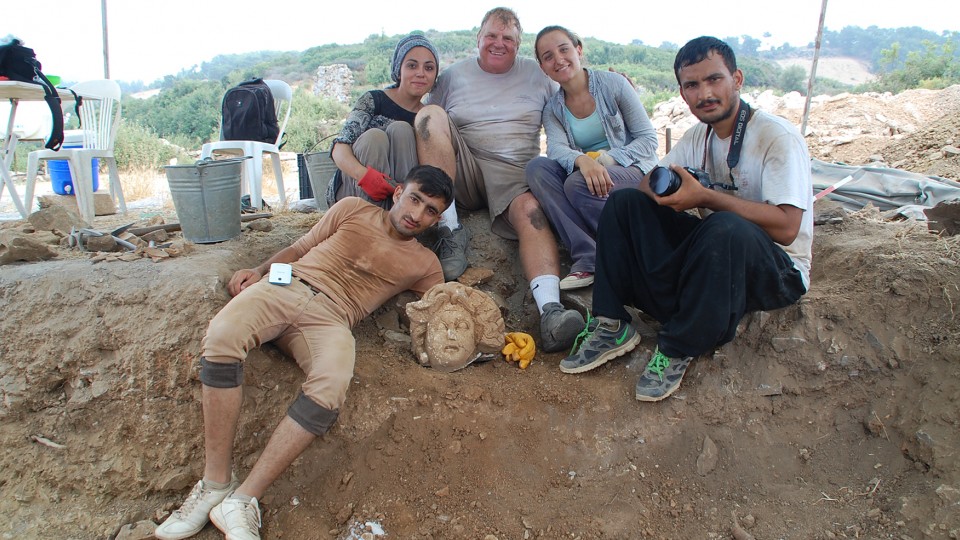
Hixson-Lied Professor of Art History Michael Hoff received a $30,000 grant from The Merops Foundation to support the Antiochia at Cragum Excavation in Turkey this summer.
“I was gratified to received the grant and somewhat relieved as it represents $30,000 toward our excavation fund for this coming season,” Hoff said. “And yet there’s still more work to be done in order to come up with our goal of about $60,000 to run the season this summer.”
Since 2005, the University of Nebraska has been excavating the remains of the ancient city of Antiochia ad Cragum, located on the southern Turkish coast. This ancient city was founded in the middle of the 1st century A.D. by Antiochus of Commagene, a client-king of Rome.
“The city was a modest city by Roman standards and outfitted with many of the typical trappings one would expect from a Roman provincial city: temples, baths, markets and colonnaded streets,” said Hoff, who serves as director of the Antiochia ad Cragum excavation. “The city thrived during the Empire from an economy that focused on agricultural products, especially wine and lumber.”
Hoff completed the 10th season of excavation last summer (they were not in the field for two seasons) and is ready to begin their second decade of work this summer.
“We have literally just scratched the surface for discovering what’s there,” Hoff said. “I’ve been thinking about the equivalent area that the ancient site encompasses, and it’s probably about the size of the city campus here. So you have to consider what it would be like for a team in the future to try to uncover the campus one building at a time, as well as the outbuildings, the infrastructure, the roads, the paths in between.”
In 2012, they began work on the great Bath-Gymnasium complex, where they uncovered a massive, Roman mosaic—a meticulously crafted, 1600-square-foot work of decorative handiwork built during the region’s imperial zenith.
In 2015, they began clearing a structure that served the city as the seat of its government and also probably for theatrical performances, Hoff said. For two seasons, the team has excavated this structure and will return this summer to complete the clearing.
On the last day of the excavation last summer, they uncovered a pathway between the theatre and the bath complex. The pathway appears to be paved in a mosaic, as a very small patch was revealed indicating the existence of the mosaic. The team will return to this corridor this summer to reveal it in its entirety.
“As we begin to spread outwards, we are uncovering different facets of the ancient city,” Hoff said. “We’ve been dealing recently with infrastructure—water, for example, and how water was brought into the city. We’re also interested in the road system and how the ancient city was accessed from the outside, both by ship and by land.”
This summer, work will also continue on clearing the large, bath complex.
“We are obligated to complete the entire area in order to allow it to be opened up for study, as well as for public access,” Hoff said. “One of the major directions that the Ministry of Culture and Tourism in Turkey is going is that for them, archaeology is important for tourism. So we will be involved in the construction of a pavilion that will be placed over some of the more important and significant finds, like the great mosaic we uncovered.”
He said it’s exciting to have more people interested in seeing the site.
“What we would like to do, in fact, is to build the pavilion at the same time we do the major conservation of the mosaic, so it the public would be able to watch the conservation occur at the same time.”
But he said more people are already visiting the site.
“We know there’s been an uptick in visitors to the site simply by going to our social media site, and we hear anecdotally from our security guard,” Hoff said. “It’s exciting to see these people appearing even during the summer when we’re there. We’re getting more and more people all the time each year that the word gets out.”